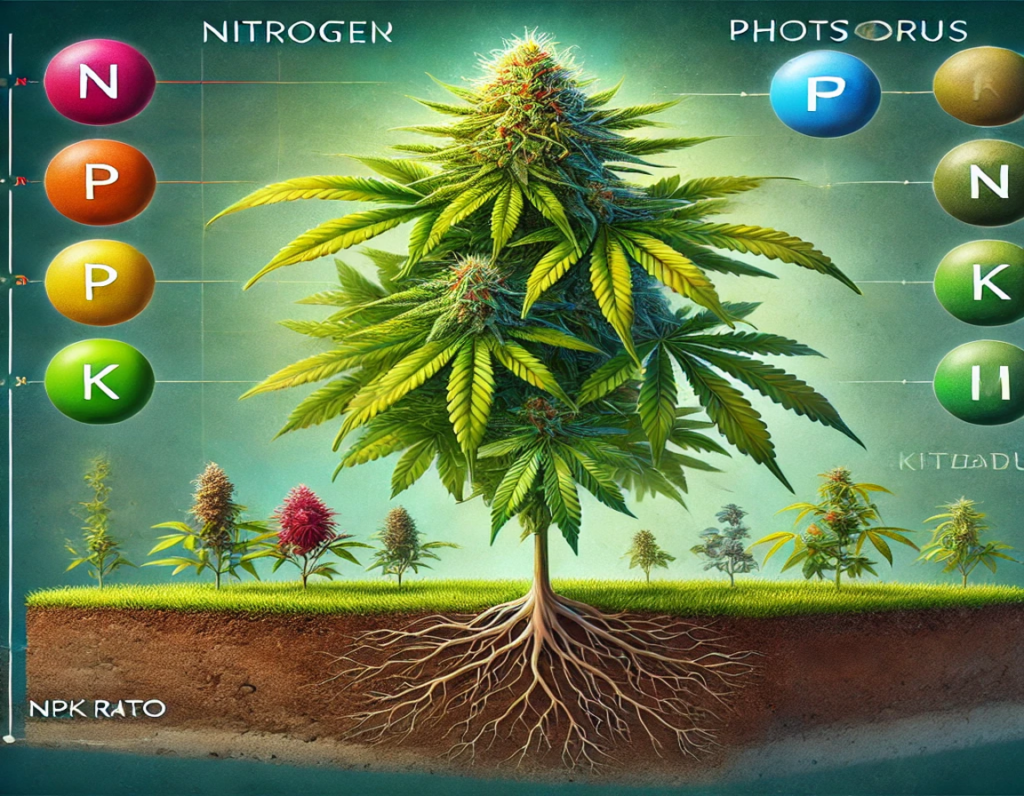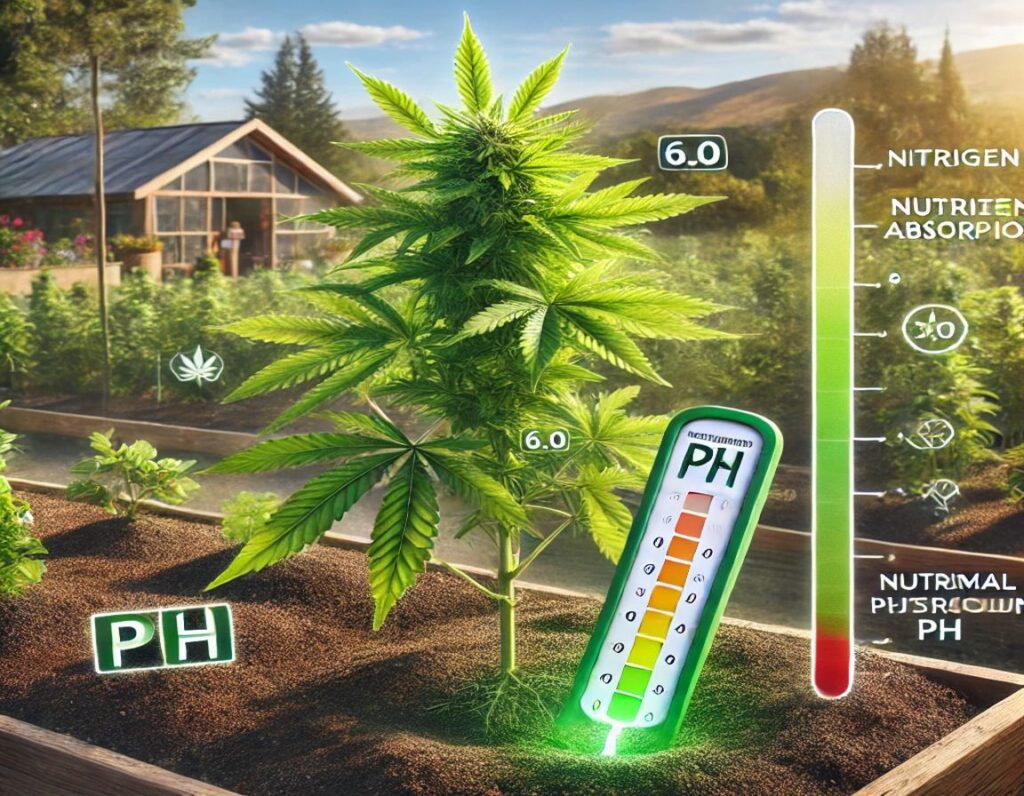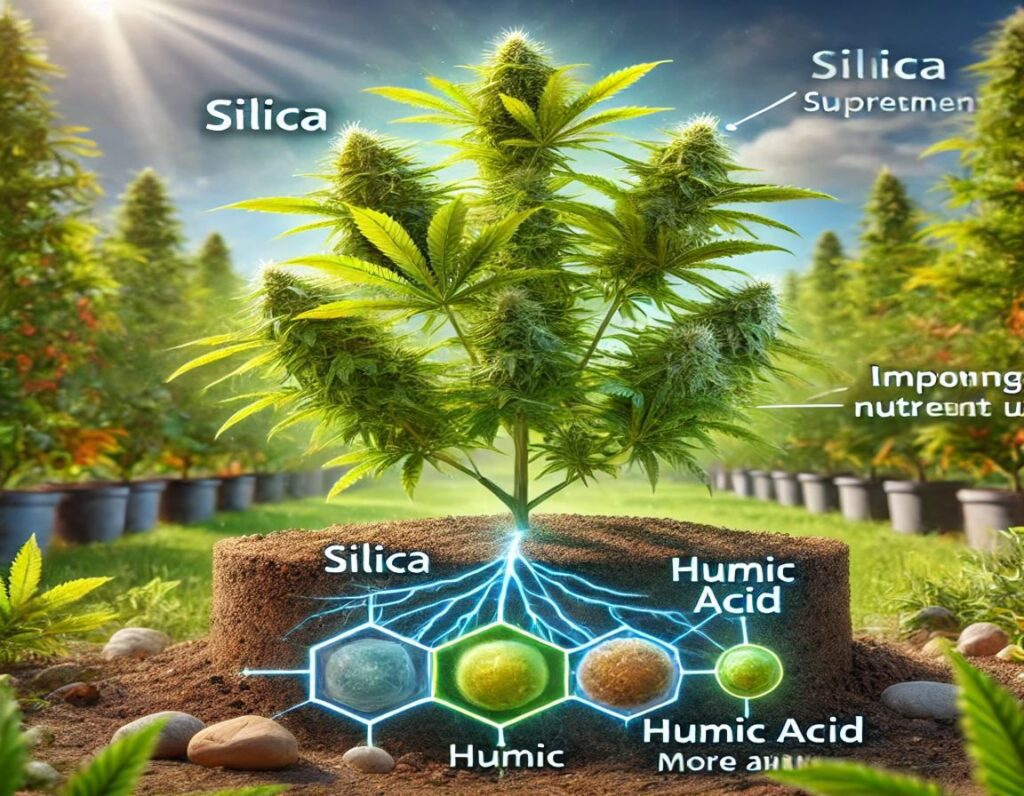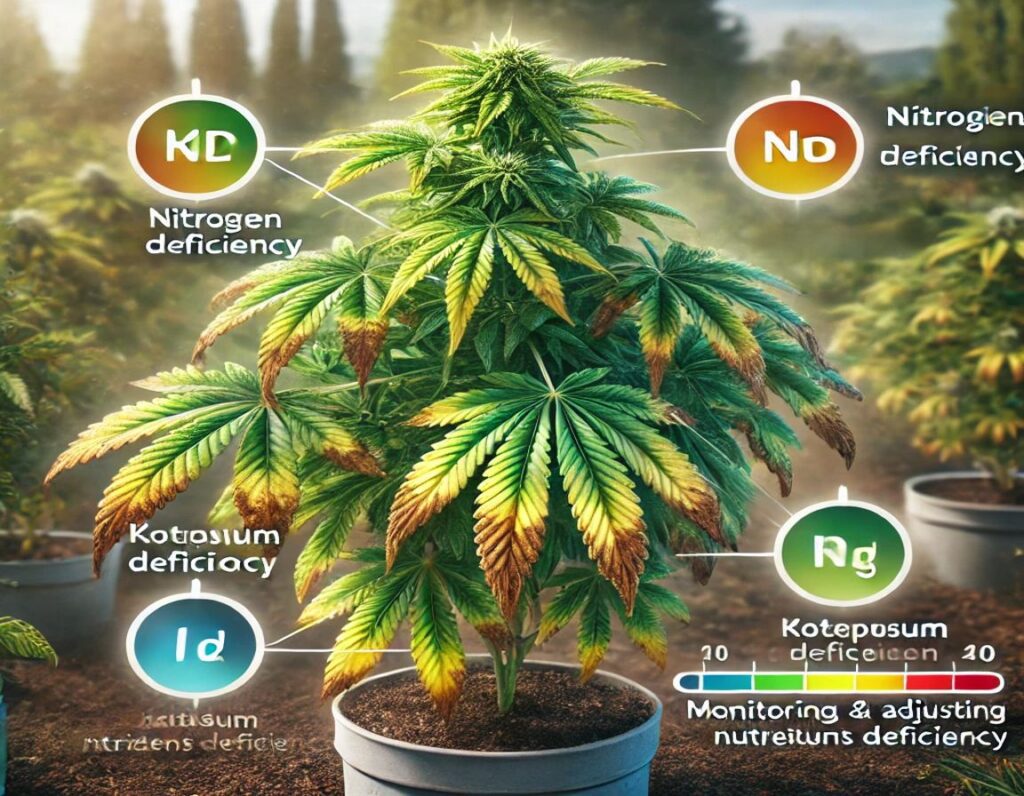
When cultivating Green Crack seeds, providing the correct balance of primary nutrients is essential for healthy growth. Nitrogen (N), Phosphorus (P), and Potassium (K)—referred to as the NPK ratio—are vital for plant development throughout their lifecycle. These three primary nutrients contribute to various functions: nitrogen supports lush green leaf and stem growth, phosphorus promotes healthy roots and flower production, and potassium enhances water retention, disease resistance, and overall metabolic functions.
During the vegetative stage, nitrogen is the most crucial nutrient for Green Crack seeds. A fertilizer with a high nitrogen content, such as an NPK ratio of 3-1-2, will support rapid leaf and stem growth, ensuring a sturdy plant structure. As the plant transitions into the flowering stage, it’s necessary to shift the nutrient blend to one that focuses on phosphorus and potassium to promote healthy bud development. At this stage, using an NPK ratio of 1-3-2 or 0-5-5 will be more appropriate.
Real-time data from cannabis growers in different regions of the USA demonstrates how effective nutrient adjustments—based on your local climate, water quality, and soil type—can make a significant difference in plant performance. Each region may have different nutrient needs, making it important to be aware of your local conditions.

While primary nutrients like nitrogen, phosphorus, and potassium are critical, micronutrients such as calcium, magnesium, and iron play equally vital roles. These nutrients help maintain overall plant health by contributing to specific functions within the plant’s biological systems.
Is necessary for strengthening plant cell walls and supporting healthy root growth. Without adequate calcium, your plants may develop weaker stems and face challenges absorbing other nutrients.
Plays a pivotal role in photosynthesis by forming a key component of chlorophyll, the molecule responsible for capturing light energy.
Is another essential micronutrient that aids in chlorophyll production and enzyme function, promoting vibrant, green leaves.
Growers often find that even when primary nutrients are well-balanced, micronutrient deficiencies can still occur, especially if the soil or water is lacking these critical elements. Adding supplements like Cal-Mag, which provides both calcium and magnesium, can prevent deficiencies that affect your plant’s ability to thrive. Regular soil testing and water quality checks are recommended to identify potential micronutrient deficiencies early.

For organic growers or those who prefer natural supplements over chemical fertilizers, several organic options can provide your Green Crack plants with the nutrients they need for healthy growth. Organic supplements not only enrich the soil but also support the broader ecosystem by promoting sustainable growing practices.
Compost adds rich organic matter to the soil, improving its structure and water retention capacity. Compost also slowly releases essential nutrients, ensuring long-term support for plant health.
Known for being an excellent source of nitrogen, worm castings contain beneficial microorganisms that help break down organic material in the soil, making nutrients more readily available to plants.
Bone meal, which is rich in phosphorus, is particularly useful during the flowering stage. Its slow-release nature provides a consistent source of phosphorus, helping to promote strong bud formation.
Using these organic supplements helps not only the plants but also improves soil health in the long run. In regions of the USA where the soil quality is poor or heavily depleted, adding organic matter can help rejuvenate the soil and create a better environment for future growth.

One of the most critical factors for successful nutrient absorption is maintaining the correct pH level in the soil or growing medium. Cannabis plants, including Green Crack, thrive in a pH range of 6.0 to 7.0. When the pH falls outside this range, it can lead to nutrient lockout, meaning the plants cannot absorb the nutrients they need, even if those nutrients are present in the soil.
In regions with hard water, pH fluctuations are common, making regular testing even more important. Using products like pH Up or pH Down can help keep your pH levels in the ideal range. Many USA-based growers have found success by investing in a reliable pH meter to perform frequent checks, ensuring the plants consistently receive the correct nutrients.
Monitoring pH levels, along with appropriate nutrient schedules, has been shown to maximize yields and improve the overall health of Green Crack plants. Adjustments to pH should be made quickly if you observe symptoms of nutrient lockout, such as yellowing leaves or stunted growth.

Silica is a powerful yet often overlooked supplement that can significantly improve the resilience and strength of your Green Crack plants. Silica strengthens plant cell walls, making the plants more resistant to environmental stresses, such as heat, drought, and pests. In addition, stronger cell walls result in thicker stems, which can support heavier flowers during the blooming phase.
This supplement is especially beneficial for outdoor growers in areas of the USA where extreme weather conditions may pose a challenge. For instance, growers in hot, dry regions like California and Arizona can benefit from using silica to enhance their plants’ tolerance to these harsh conditions.
Another valuable supplement to consider is humic acid, which improves nutrient uptake by breaking down nutrients in the soil into forms that are easier for the plant to absorb. By adding humic acid to your nutrient schedule, you ensure that your Green Crack plants can access the full range of nutrients present in the soil, leading to more vigorous growth and higher yields.
Real-time data from cannabis growers across various climates in the USA shows that incorporating silica and humic acid into the nutrient regimen results in stronger, healthier plants with more resinous buds.

Even with a well-thought-out nutrient schedule, it’s essential to keep an eye on your Green Crack plants for signs of nutrient deficiencies. Being proactive and identifying deficiencies early can prevent more significant problems and ensure healthy growth throughout the plant’s lifecycle.
Typically shows up as yellowing leaves, particularly at the bottom of the plant. If you notice this issue, it may be time to increase nitrogen levels in your nutrient schedule.
Can lead to bluish-green leaves and stunted growth. Boost phosphorus levels during the flowering stage to prevent this problem.
Manifests as brown edges on the leaves and a reduction in the plant’s resistance to pests and diseases.
Regularly inspecting your plants, testing soil and water, and making nutrient adjustments as needed will help you maintain a healthy growing environment. If deficiencies are detected, correct them by adjusting the pH, adding targeted supplements, or modifying the nutrient blend.
Ensure your Green Crack plants receive a balanced NPK ratio, with higher nitrogen during the vegetative stage and more phosphorus and potassium during the flowering stage.
Micronutrients such as calcium, magnesium, and iron are essential for plant health. Supplements like Cal-Mag can help prevent deficiencies in your Green Crack plants.
Organic supplements, including compost, worm castings, and bone meal, are great natural alternatives to chemical fertilizers, supporting soil health and plant growth.
Maintaining a pH level between 6.0 and 7.0 is crucial for ensuring nutrient absorption. Regularly test and adjust pH levels to avoid nutrient lockout.
Silica strengthens cell walls, making plants more resilient, while humic acid improves nutrient uptake, leading to healthier, stronger Green Crack plants.
Monitor your plants regularly for signs of nutrient deficiencies. Early detection and adjustment of your nutrient schedule can prevent more significant problems and support optimal growth.
A higher nitrogen ratio, such as 3-1-2, is ideal during the vegetative stage to support leaf and stem growth.
pH affects how well your plants can absorb nutrients. Keeping the pH in the optimal range (6.0 to 7.0) ensures that your Green Crack plants can take in the nutrients they need.
Yes, organic supplements like compost, worm castings, and bone meal provide natural nutrients and can be used instead of chemical fertilizers.
A nitrogen deficiency typically results in yellowing leaves, especially at the bottom of the plant. You can correct this by increasing nitrogen in your nutrient mix.
Silica strengthens plant cell walls, making them more resistant to stress, pests, and environmental challenges such as heat and drought.
We ship and deliver world wide via USPS and various couriers.
We offer a wide range of secure and anonymous online payment options.
We care about you, our customer. Please contact us with any questions or concerns.
Find out more about the benefits of being a loyal and regular customer.
WE ARE EVERY GROWERS ONE STOP SHOP TO ACQUIRE PREMIUM CANNABIS SEEDS FOR SALE IN THE USA, CANADA AND AUSTRALIA

Farmers Lab Seeds 2024, | All Right Reserved
Seeds are sold as novelty items, souvenirs, and collectibles. They contain 0% THC. We encourage our customers to check the legislation in their Country, State, Province, and Municipality prior to purchasing items from our store. We do not provide growing information.
All seeds are sold as hemp, and lab tested under 0.3% THC. This product is not for use by or sale to persons under the age of 21. This product should be used only as directed on the label. It should not be used if you are pregnant or nursing. Consult with a physician before use if you have a serious medical condition or use prescription medications. A Doctor’s advice should be sought before using this and any supplemental dietary product. All trademarks and copyrights are property of their respective owners and are not affiliated with nor do they endorse this product.
These statements have not been evaluated by the FDA. This product is not intended to diagnose, treat, cure or prevent any disease. Individual weight loss results will vary. By using this site, you agree to follow the Privacy Policy and all Terms & Conditions printed on this site. Void Where Prohibited by Law.